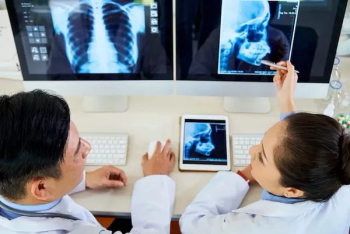Welcome to Diagnostic Imaging’s Weekly Scan. I’m senior editor Whitney Palmer, bringing you the top stories from the week.
Before we get to our interview with Drs. Jennifer Hill from Radiology Partners and Amit Mahajan from Yale University about the neuroimaging findings and neurological implications associated with COVID-19 infection, here is the latest news.
This week, the International Society for Magnetic Resonance in Medicine annual meeting brought us a wealth of research findings that will have future implications on the industry. According to one virtual poster, investigators from the University of Cambridge School of Clinical Medicine in the United Kingdom shared their findings that abbreviated MRI has comparable diagnostic performance to full-protocol MRI with breast imaging. In a small study with 13 patients, they found that there was no significant difference in sensitivity, specificity, or area under the curve between the two protocols. As a result, they asserted, abbreviated protocols can be implemented to save both scan time and cost.
Also at the ISMRM meeting, researchers from the National Institutes of Health presented a virtual poster that detail a lower-field strength MRI can provide effective cardiac imaging for patients who have suspected or known heart attack. To make this determination, they scanned 13 possible and confirmed heart attack patients with both 0.55T MRI and 1.5T MRI, and they conducted late gadolinium enhancement imaging after 10 minutes of the administration of gadobutrol with both scans on a 17-segment model. They found the 0.55T scanner identified 59 segments with myocardial infarction while the 1.5T scanner pinpointed 63 segments. They are planning future studies that include free-breathing acquisition methods.
The American Journal of Roentgenology also published news about gadolinium this week. Researchers from Princess Margaret Cancer Center in Toronto found that using a gadolinium-based contrast agent with diffusion-tensor imaging does not change the accuracy of breast cancer diagnosis. In a study with 26 women who had BI-RADS scores of 0, 4, 5, and 6, investigators scanned participants with a 3T scanner twice, using the same diffusion-tensor imaging sequence both before and immediately after breast dynamic contrast-enhanced MRI. They diagnosed 58 percent of women with cancer – 13 with infiltrating ductal carcinoma and two with ductal carcinoma in situ. Based on their analysis, they determined that the accuracy of breast cancer detection was not significantly different for unenhanced or contrast-enhanced datasets.
Research also emerged this week that showed CT illuminates the link between weight and brain function. In an article published in the Journal of Alzheimer’s Disease, investigators from Amen Clinics, a national network of outpatient mental health clinics, discussed the connection between higher body mass index and greater brain dysfunction. They analyzed 35,000 functional neuroimaging SPECT scans from more than 17,000 people between the ages of 18 and 94. They determined that as a person’s weight increased, the blood flow to his or her brain decreased. This phenomenon affected the areas of the brain most commonly associated with Alzheimer’s – the temporal and parietal lobes, hippocampus, posterior cingulate gyrus, and precuneus. These findings support the growing notion that Alzheimer’s could be a lifestyle disease, they said.
And, of course, COVID news is still here – just like the teleradiology that has been more widely implemented to ensure timely – and safe – imaging reads. In a short communication published in the Journal of the American College of Radiology, industry leaders from four institutions – Texas Health Presbyterian Dallas, New York University Langone, University of California at San Diego, and Chambersburg Imaging Associates – discussed the feelings their providers have toward continuing remote reading long term. Everyone agreed that teleradiology is here to stay, but they did stress that a balance between in-person and off-site reading will be necessary. Not only will it ensure practices or groups can continue to foster professional relationships and fulfill the requirements of their contracts, but the greater flexibility will enable radiologists to maintain a better work-life balance and foster greater productivity.
And, finally this week, Diagnostic Imaging spoke with Dr. Jennifer Hill from Radiology Partners and Dr. Amit Mahajan from Yale University School of Medicine about the growing body of neuroimaging findings and neurological impacts of COVID-19. They shared the most up-to-date information about the neurological effects and discussed what they have seen in their personal practice. Here’s what they had to say.





